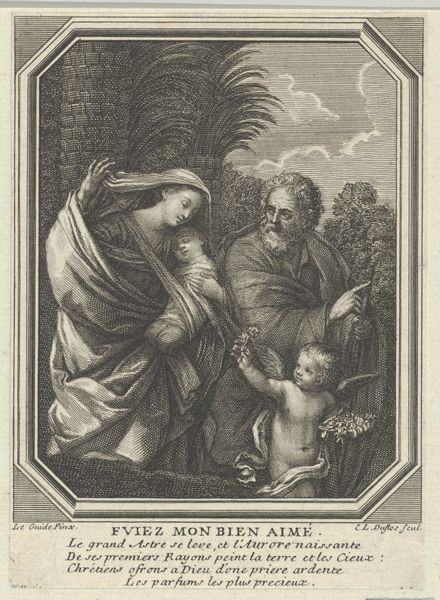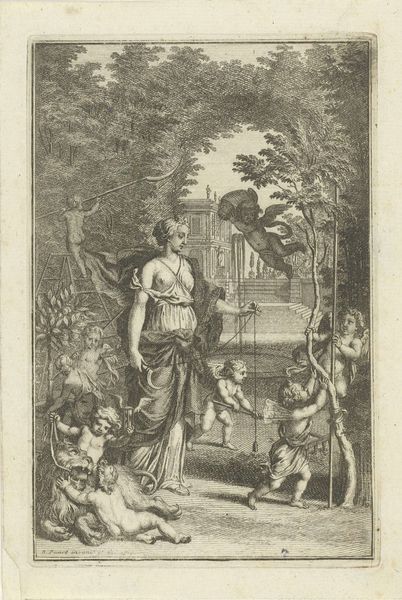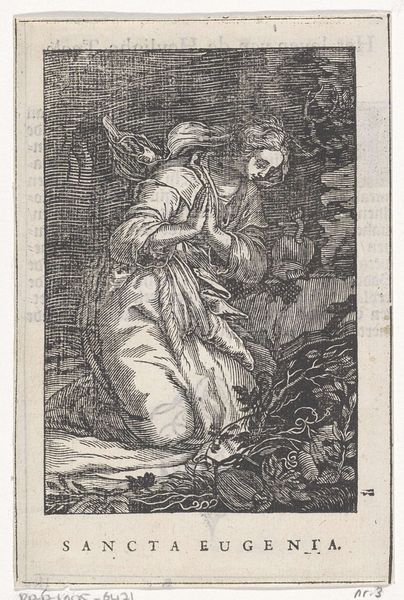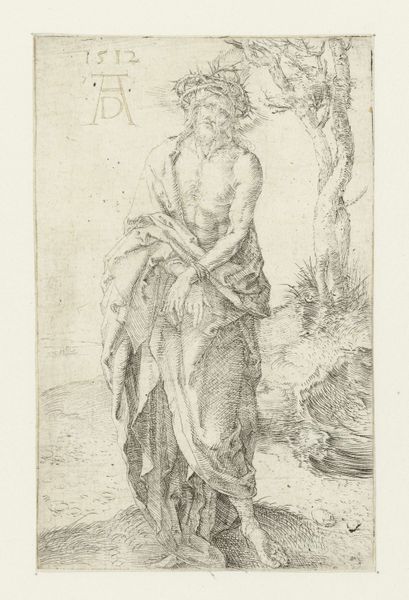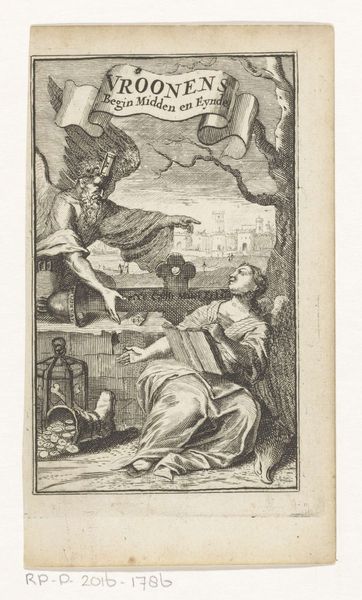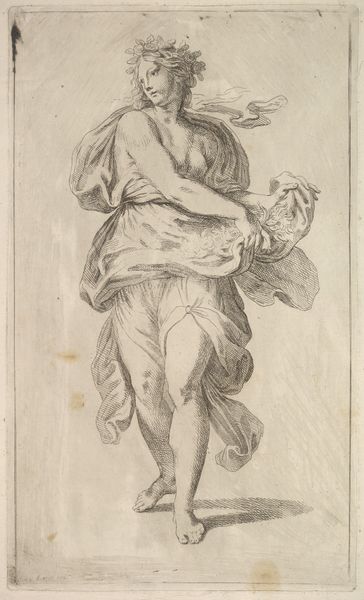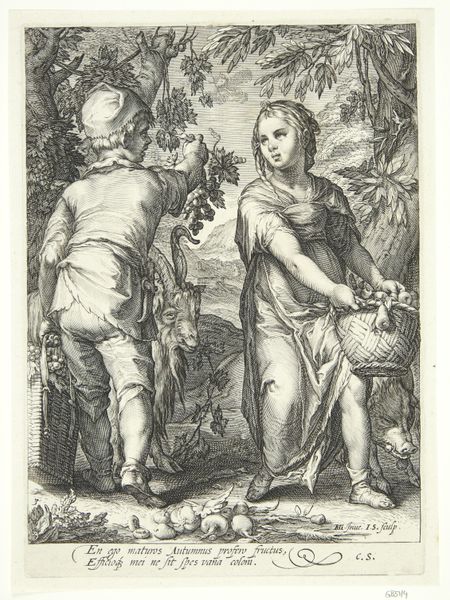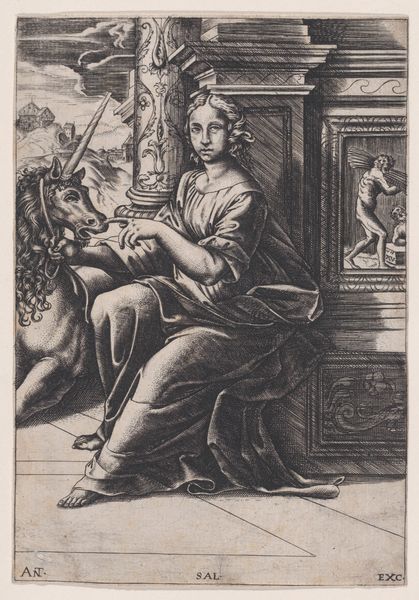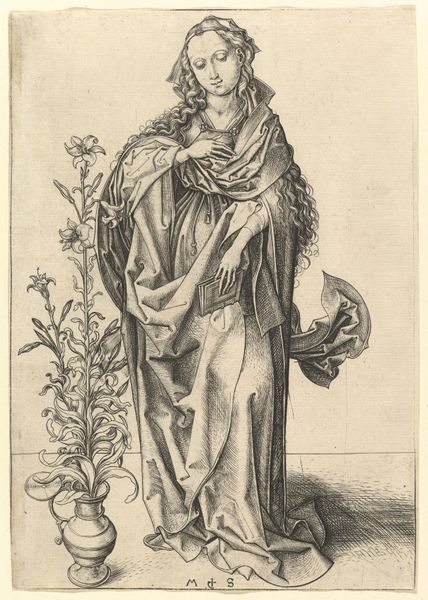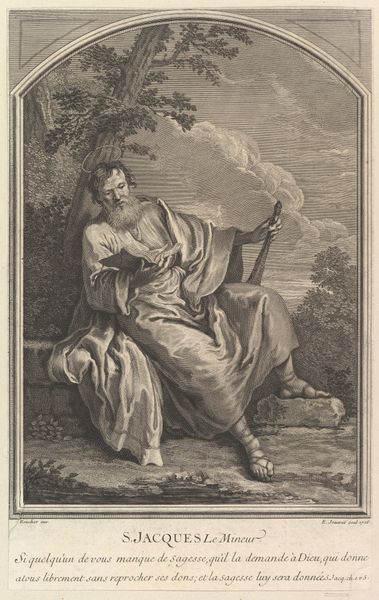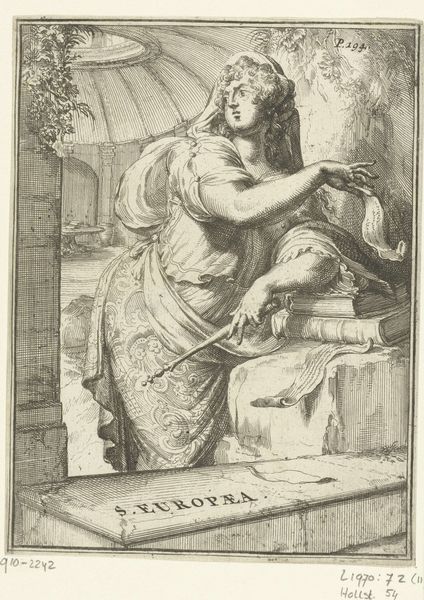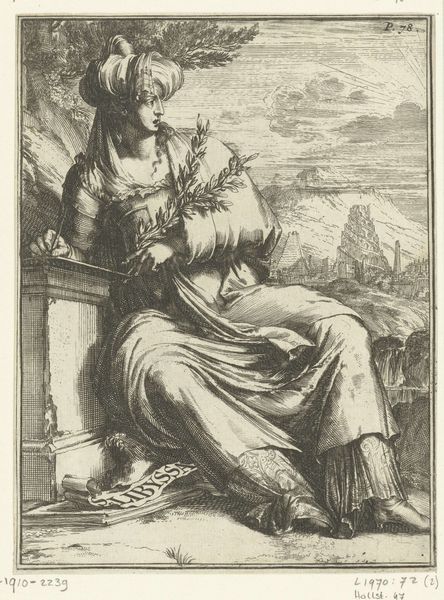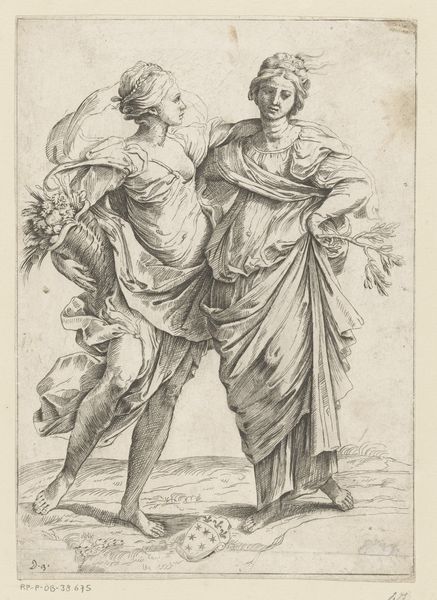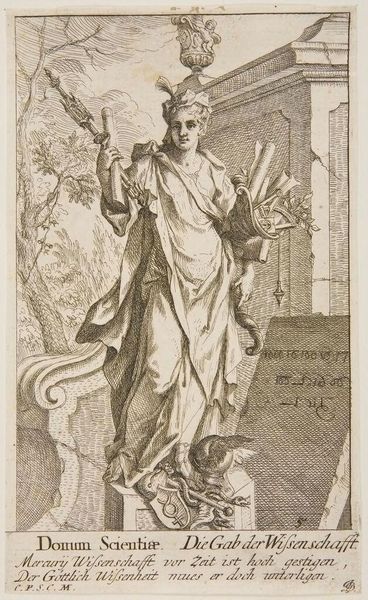
La Botanique, from the Almanach iconologique 1760 - 1770
0:00
0:00
drawing, print, engraving
#
portrait
#
drawing
#
allegory
# print
#
landscape
#
history-painting
#
engraving
#
rococo
Dimensions: sheet: 4 5/16 x 6 1/2 in. (11 x 16.5 cm)
Copyright: Public Domain
Editor: So, here we have *La Botanique* from the Almanach iconologique, created sometime between 1760 and 1770. It’s an engraving by Charles Nicolas Cochin II. I’m struck by how this feels like a classical allegory, even though it's all about botany. What stands out to you? Curator: What I see is a perfect encapsulation of the Enlightenment’s drive to classify and control the natural world. Notice how "La Botanique," the allegorical figure of botany, diligently inscribes her knowledge onto the book – an act heavy with symbolic power. But it's not just about knowledge; it's about a particular *kind* of knowledge, organized and presented in a way that makes the world legible and, therefore, manageable. Editor: So, the act of writing itself is a symbol of control? Curator: Precisely. Think of how, throughout history, writing has been associated with power – with religious texts, legal codes, scientific treatises. The book represents a container for organizing the perceived chaos of the botanical world. Even the cactus potted neatly beside her signifies control and domestication. Editor: The exotic plants contrast with the controlled setting. Was there a psychological aspect to this? Like taming the wild? Curator: Absolutely. The wild, the uncontrolled, often represented fear and the unknown. By classifying and illustrating, they were attempting to create a cultural memory, or almost an artificial memory, of plants that they controlled in collections like botanical gardens. Editor: Fascinating. I hadn't considered that angle before. Curator: The visual language, like the carefully rendered flora, speak to a desire to understand, categorize, and, ultimately, dominate the natural world. Editor: That’s given me so much to think about in terms of how we view our relationship with the environment. Thanks for this insight.
Comments
No comments
Be the first to comment and join the conversation on the ultimate creative platform.
